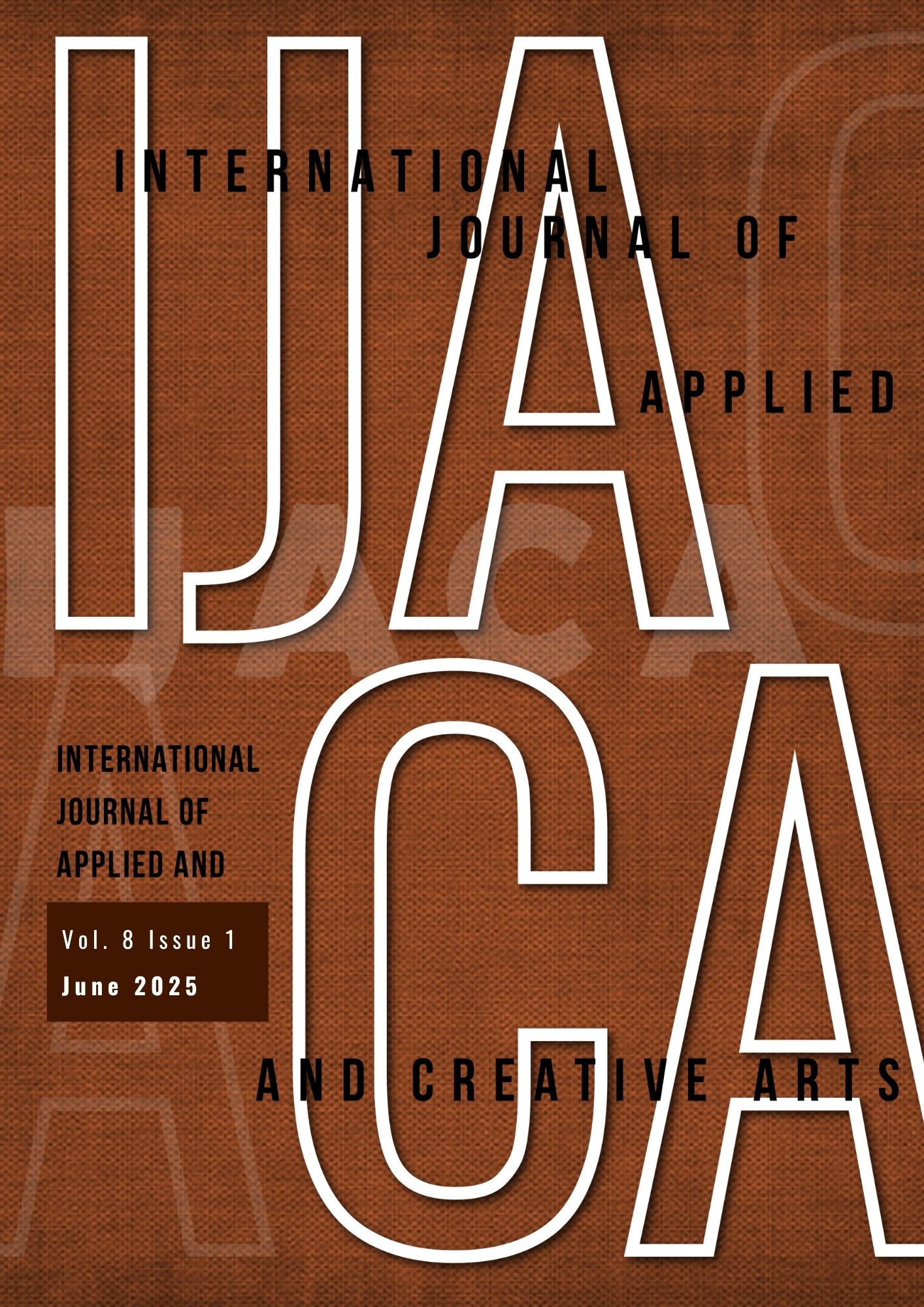Emotional Furniture Design For The Elderly:How To Make Design Connect To End-Users
DOI:
https://doi.org/10.33736/ijaca.8732.2025Keywords:
elderly furniture, emotional design, empathy, end-usersAbstract
As the problem of an aging society becomes increasingly serious, the emotional needs and quality of life of the elderly are receiving more and more attention. Furniture is not only closely related to people's daily lives, but also shows the emotional pursuits and personality characteristics of users during use. Therefore, in order to narrow the distance between elderly furniture and users, it is necessary to use the concept of emotional design, and then design furniture products with spiritual care and emotional satisfaction characteristics according to the physiological and psychological characteristics of the elderly and their emotional needs. This paper aims to explore how to improve the comfort and emotional resonance of furniture used by the elderly through emotional design methods. Through empathetic design and metaphorical techniques, we designed furniture that can arouse emotional resonance and psychological memory to meet the social and emotional needs of the elderly in environments such as reading rooms. The ultimate goal is to design furniture that is both practical and that can give emotional support and spiritual satisfaction to the elderly, so that they can feel the care and respect of society in their later years.
References
Fu R.& Zhang Z. (2019). Research on the functional emotional design of furniture for the elderly. China Forest Products Industry,46-49.
Lu Xiaomeng. (2021). Analysis on the Emotional Design of the Furniture for the Aged. Packaging Engineering,42(02): 282-285.
Mu Ren.(2021). Research on Humanized Design of Furniture for the Elderly. Packaging Engineering, 282-285.
RIVM.(2013). the Dutch National Institute for Public Health and the Environment 2013, Available online: https://www.rivm.nl/en/news/annual-report-rivm-2013-online.
Shanat, M.& Saili, J. (2018). Forecasting Consumers' Satisfaction of Furniture Design Through Semantic Differential Method. Global Business and Management Research: An International Journal. 22-25.
Shanat, M.(2014). Furniture Design: Application of semantic differential techniques to measure and evaluate design and user groups' perceptions of aesthetic, form and utility through the medium of chair design. The University of Western Australia,109-111.
World Health Organization (WHO). (2022). Active Ageing: A Policy Framework. World Health Organization. Online: https://apps.who.int/iris/handle/10665/67215.
Wu Chuyan. (2020). Emotional Design of Intelligent Furniture Interface Based on the Elderly. Mass Literature and Art, 75-76.
Yang xia.(2018). Research on Humanized Design of Old People’s Furniture, Design and Theory.65-66.
Zhengjun W. et al. (2019). Study on the Emotional Design of Reading Room Furniture for the Aged Community.2019 International Conference on Literature, Art and Human Development (ICLAHD 2019).27.
Zhang J.& Shanat M.(2023). Research on Design and Development of Elder-Friendly Furniture in Chinese Residential Situation. Art and Society. 32-37.
Downloads
Published
How to Cite
Issue
Section
License
Copyright (c) 2025 UNIMAS Publisher

This work is licensed under a Creative Commons Attribution-NonCommercial-ShareAlike 4.0 International License.
Copyright Transfer Statement for Journal
1) In signing this statement, the author(s) grant UNIMAS Publisher an exclusive license to publish their original research papers. The author(s) also grant UNIMAS Publisher permission to reproduce, recreate, translate, extract or summarize, and to distribute and display in any forms, formats, and media. The author(s) can reuse their papers in their future printed work without first requiring permission from UNIMAS Publisher, provided that the author(s) acknowledge and reference publication in the Journal.
2) For open access articles, the author(s) agree that their articles published under UNIMAS Publisher are distributed under the terms of the CC-BY-NC-SA (Creative Commons Attribution-Non Commercial-Share Alike 4.0 International License) which permits unrestricted use, distribution, and reproduction in any medium, for non-commercial purposes, provided the original work of the author(s) is properly cited.
3) For subscription articles, the author(s) agree that UNIMAS Publisher holds copyright, or an exclusive license to publish. Readers or users may view, download, print, and copy the content, for academic purposes, subject to the following conditions of use: (a) any reuse of materials is subject to permission from UNIMAS Publisher; (b) archived materials may only be used for academic research; (c) archived materials may not be used for commercial purposes, which include but not limited to monetary compensation by means of sale, resale, license, transfer of copyright, loan, etc.; and (d) archived materials may not be re-published in any part, either in print or online.
4) The author(s) is/are responsible to ensure his or her or their submitted work is original and does not infringe any existing copyright, trademark, patent, statutory right, or propriety right of others. Corresponding author(s) has (have) obtained permission from all co-authors prior to submission to the journal. Upon submission of the manuscript, the author(s) agree that no similar work has been or will be submitted or published elsewhere in any language. If submitted manuscript includes materials from others, the authors have obtained the permission from the copyright owners.
5) In signing this statement, the author(s) declare(s) that the researches in which they have conducted are in compliance with the current laws of the respective country and UNIMAS Journal Publication Ethics Policy. Any experimentation or research involving human or the use of animal samples must obtain approval from Human or Animal Ethics Committee in their respective institutions. The author(s) agree and understand that UNIMAS Publisher is not responsible for any compensational claims or failure caused by the author(s) in fulfilling the above-mentioned requirements. The author(s) must accept the responsibility for releasing their materials upon request by Chief Editor or UNIMAS Publisher.
6) The author(s) should have participated sufficiently in the work and ensured the appropriateness of the content of the article. The author(s) should also agree that he or she has no commercial attachments (e.g. patent or license arrangement, equity interest, consultancies, etc.) that might pose any conflict of interest with the submitted manuscript. The author(s) also agree to make any relevant materials and data available upon request by the editor or UNIMAS Publisher.

